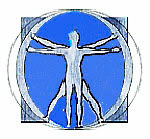There was an interesting panel discussion last night at the WebGuild monthly meeting. John Rowell (Chief Technology Officer, OpSource), Brad Neuberg (Developer Advocate, Google Gears), Raju Vegesna (Evangelist, Zoho), and Bill Scott (Director of UI Engineering, Netflix) gave their impressions on were we currently are on the web and the trend toward Web Apps. The trend over the last two years has been MashUps, where you build a Web App that uses information and the infrastructure of a larger application. Two common examples are small Web Apps that running inside Facebook and Web Apps that use data from Google Maps.
This trend has been gaining ground under the term Software as a Service (SaaS). OpSource and AdventNet's ZoHo are good examples. OpSource is targeting the developers at both small and large companies. They provide the infrastructure to support the Web App. The companies can now focus their resources on the product and let OpSource worry about servers, storage, security, backups, extensibility, and all the other large, complex issues that come with owning the infrastructure.
Adventnet's ZoHo product line implements both the infrastructure and the Web Apps sitting on it using this separation approach. Using a common infrastructure, web App teams only need to focus on the features and functions of their products. Each product is light weight and the development is customer driven. They only add features and functions when they are requested by the customer. The infrastructure team creates and maintains the support systems. This enables them to roll out new Web Apps and make changes to the existing Web Apps quickly.
Google is a big player in the move to open source tools and applications that make it easier to use the web. Google Gears is an application that enables you to use the data from an on-line service when you are not on-line. Basically it creates a database on the client system used to cache the data from the on-line service. When your system does connect back to the on-line service, the data is automatically synced. While a little different, it proves a developer with a toolkit to create an App that uses the infrastructure of an existing on-line service, such as Google Maps, without being part of that company.
At first, Netflix's interest in this area was puzzling. Their focus is matching movies to customers and enhancing your movie experience. They have a huge database about movies and their customers. Opening that up to outside Web App developers is not the driving factor. With well over seven million subscribers, the infrastructure extensibility and the ability to create and deploy new features are complex problems. Redesigning the system to follow the model of separating the infrastructure from the Web Apps will help them handle the current and future demands. It will also make it easier for them to move into direct distribution.
For the Web App developers and the companies that own both the infrastructure and the Web Apps, this is a great move. As on-line services and applications grow, the infrastructure complexity, cost, and extensibility have become serious issues. This model is not new. For years, the satellite designer had used a common data bus that allowed different components to plug-in and communicate. We are now seeing the concept of the web as a big data bus start to drive the thinking. The issues of costs and monetization are quietly being discussed inside the major on-line service providers. They are creating APIs to allow controlled access to their data and functions. The trend of Web App developers creating products without large and expensive infrastructure investments will continue to grow. At some point, the people spending huge sums of money on the infrastructure will a way to collect payment form those developers. If you have a closed system, like Facebook, that becomes easy. The current movement is toward more open systems and not developing more closed gardens. It will be interesting to see how the usage and payment are tracked and how the costs are allocated.
Technorati tags: web design; software management; web apps; business strategy;
Subscribe to:
Post Comments (Atom)



No comments:
Post a Comment